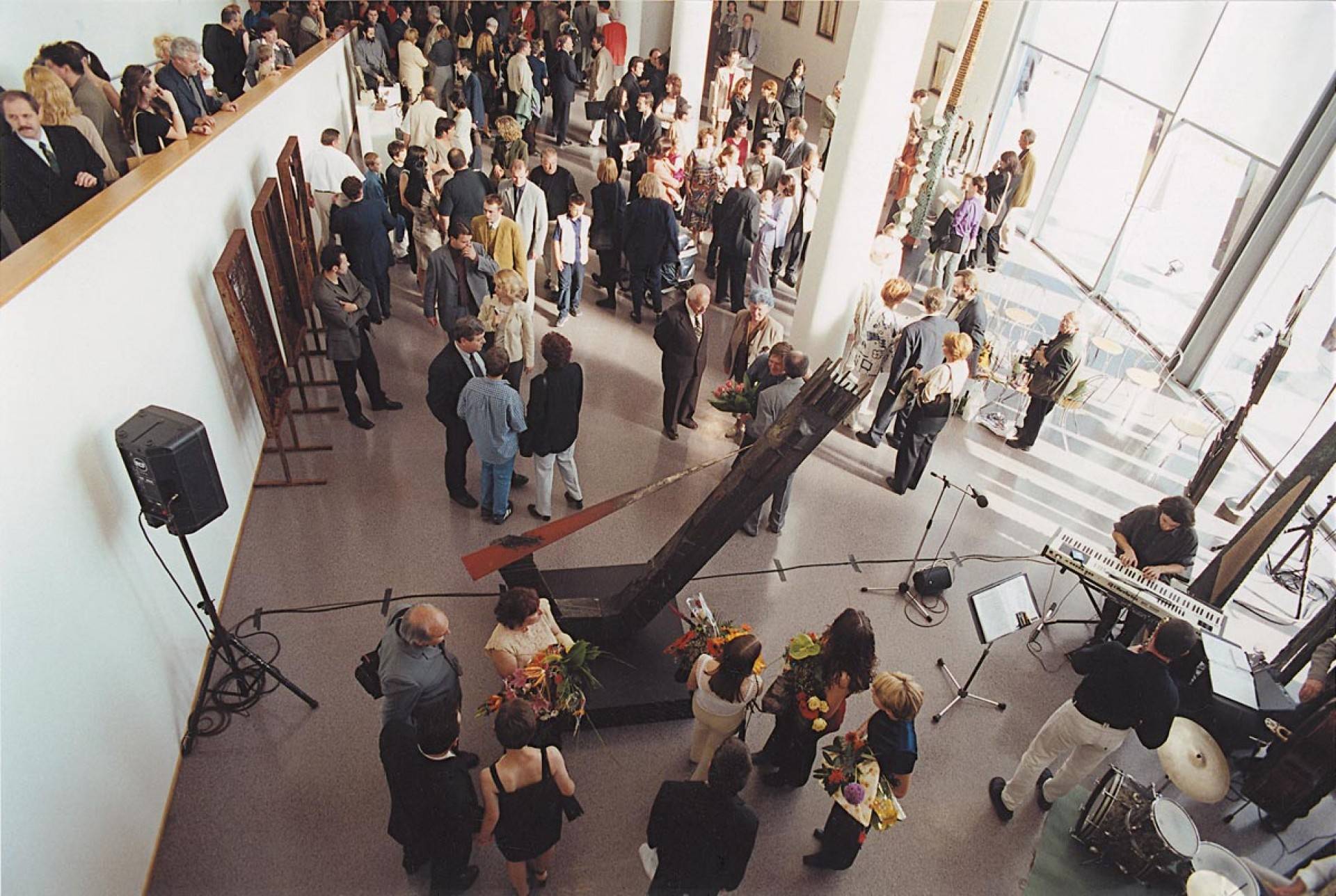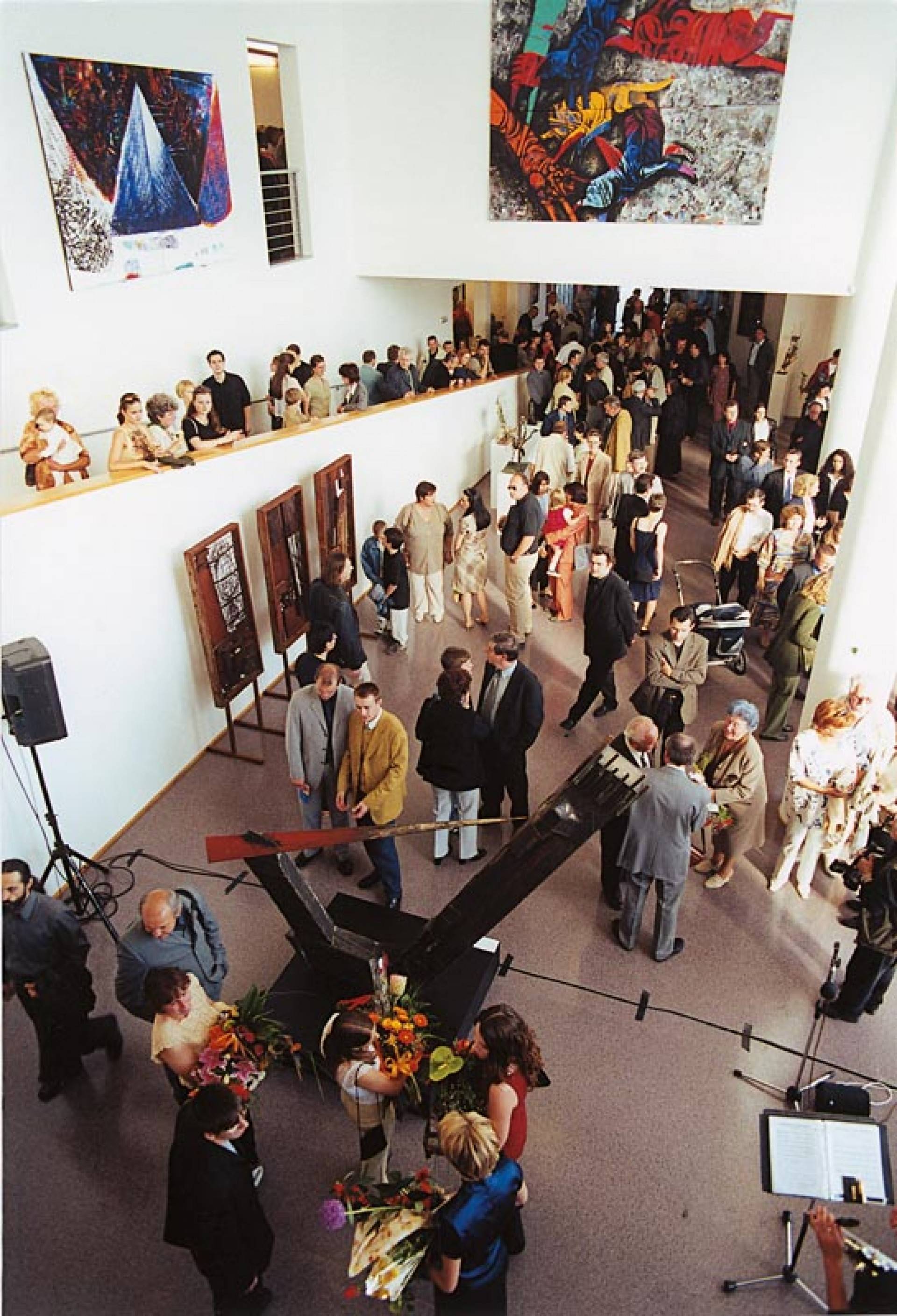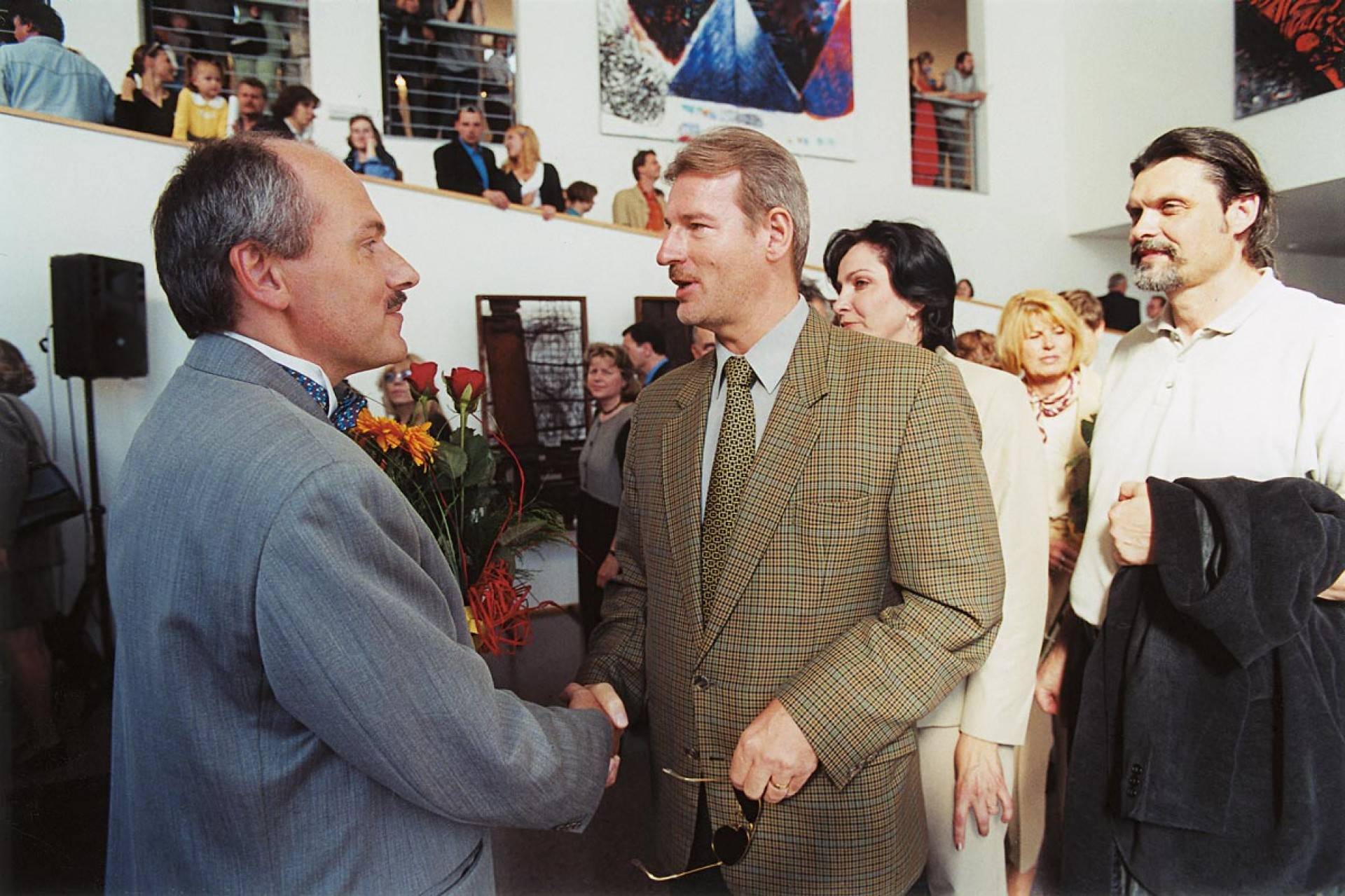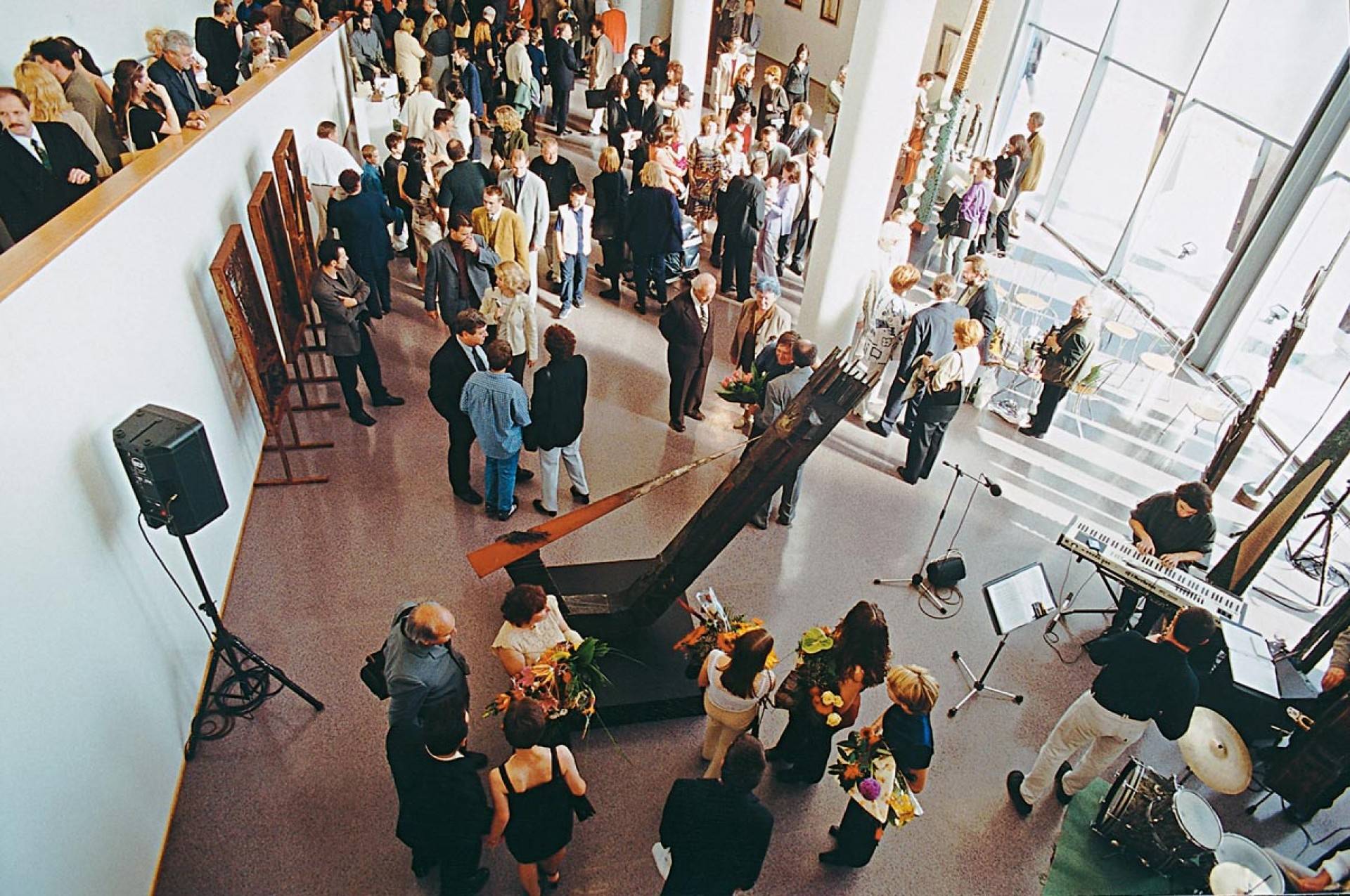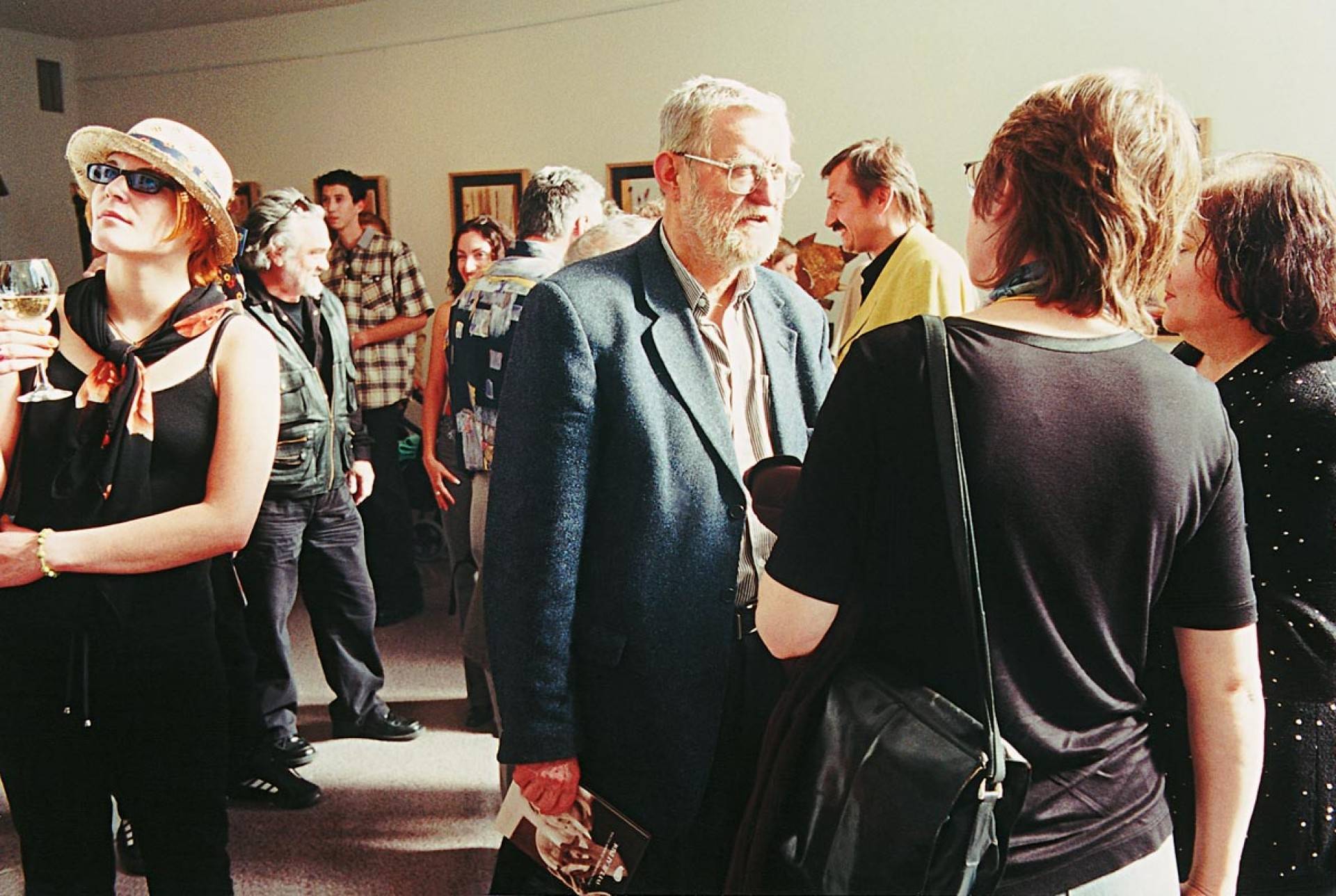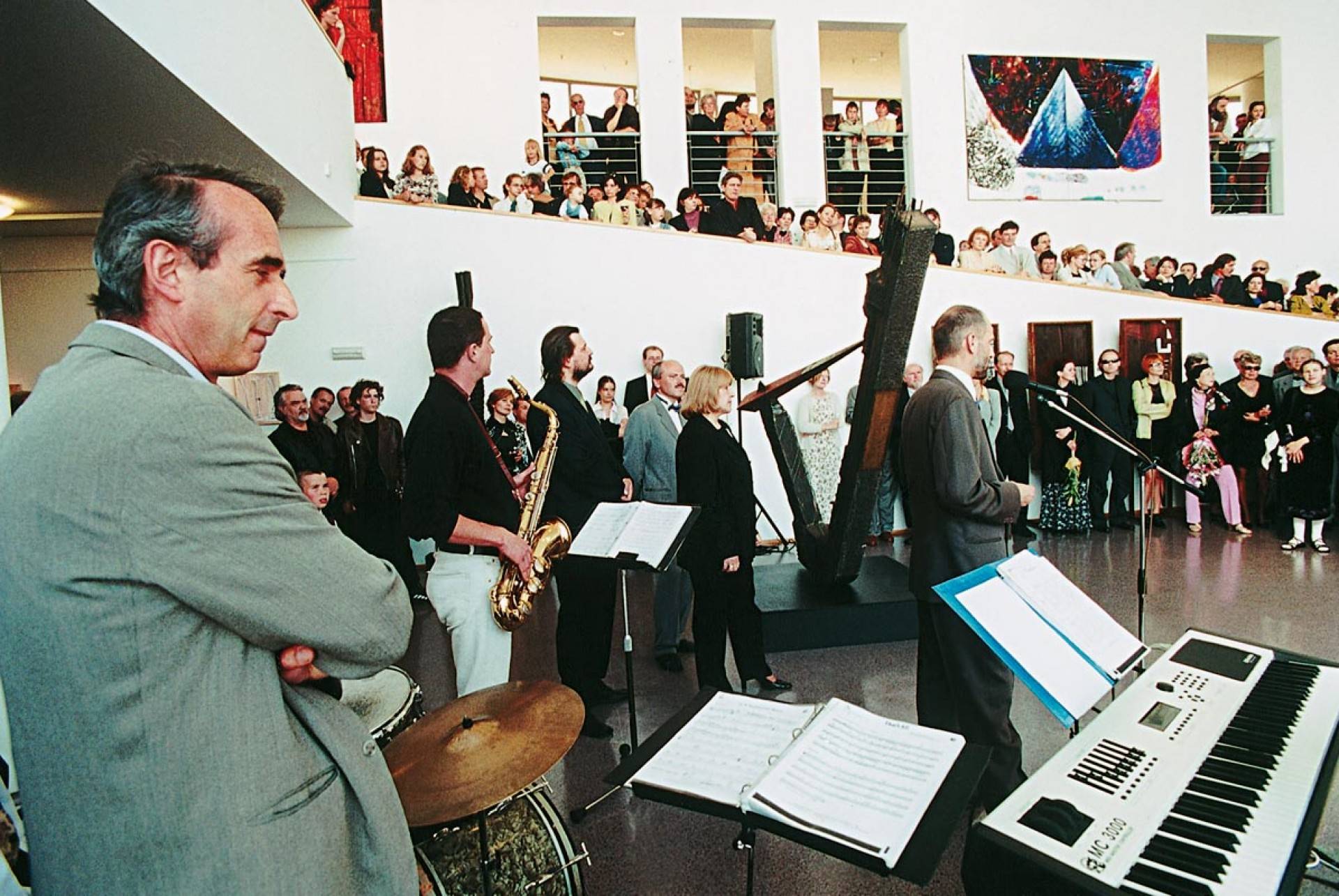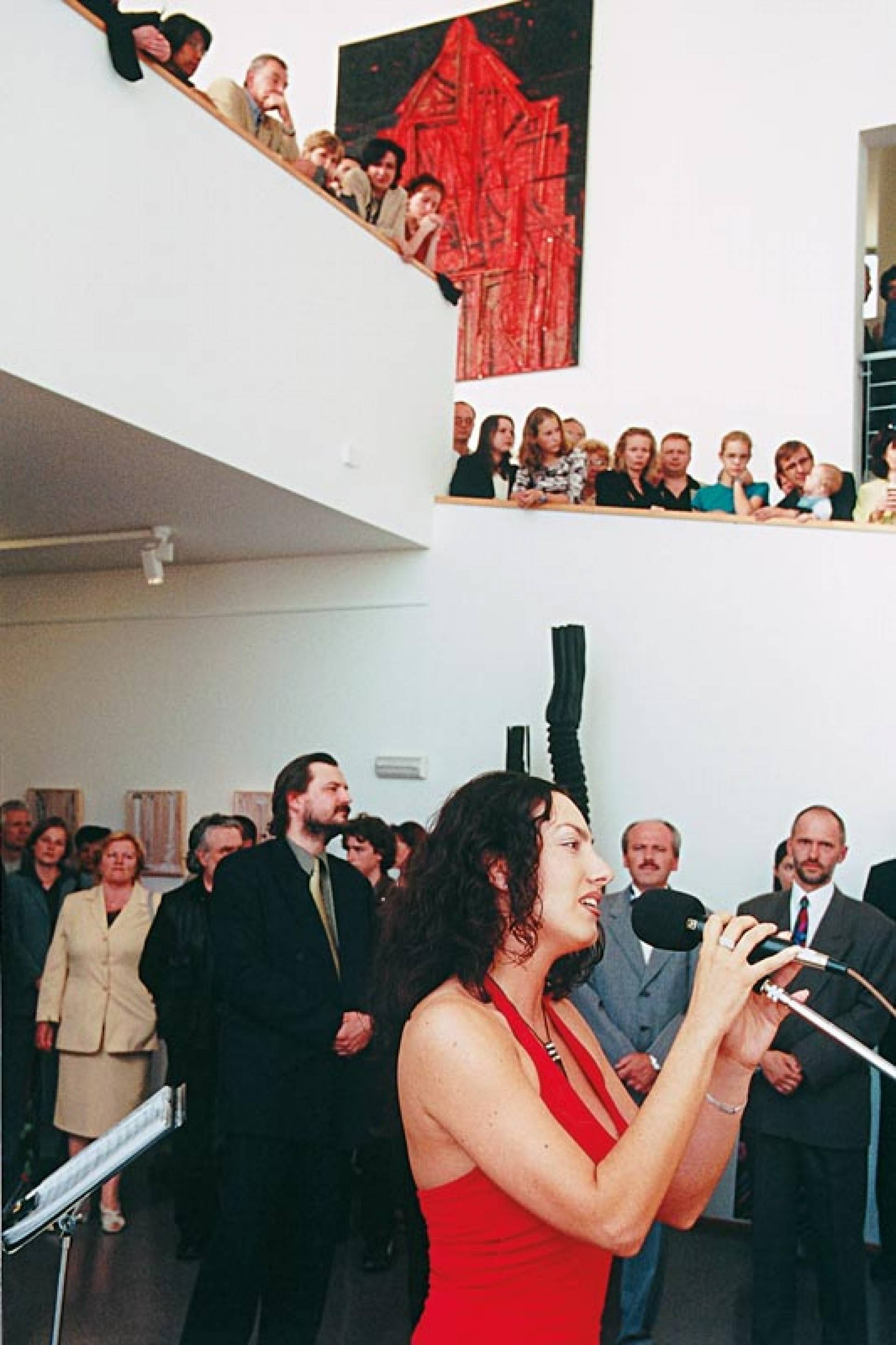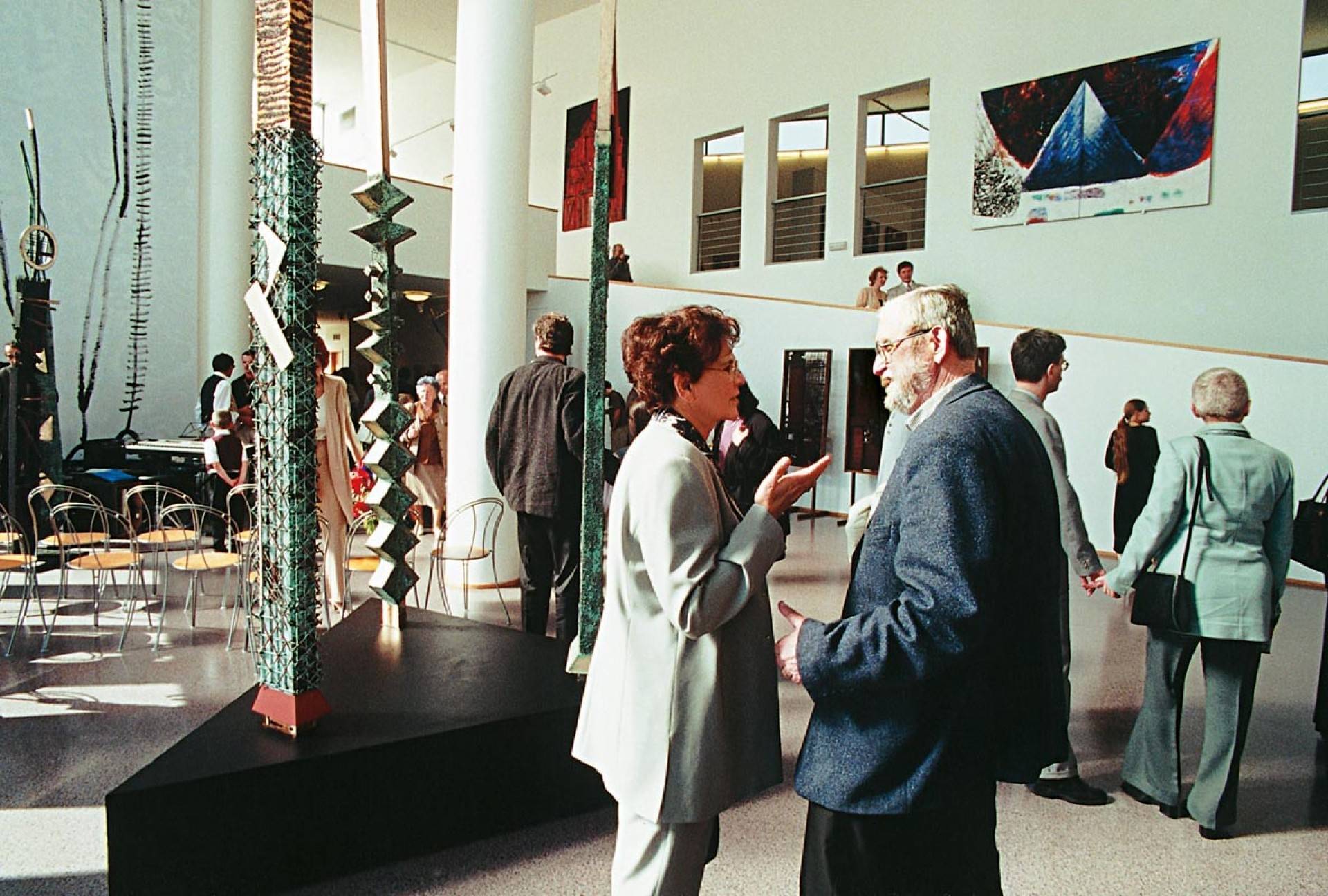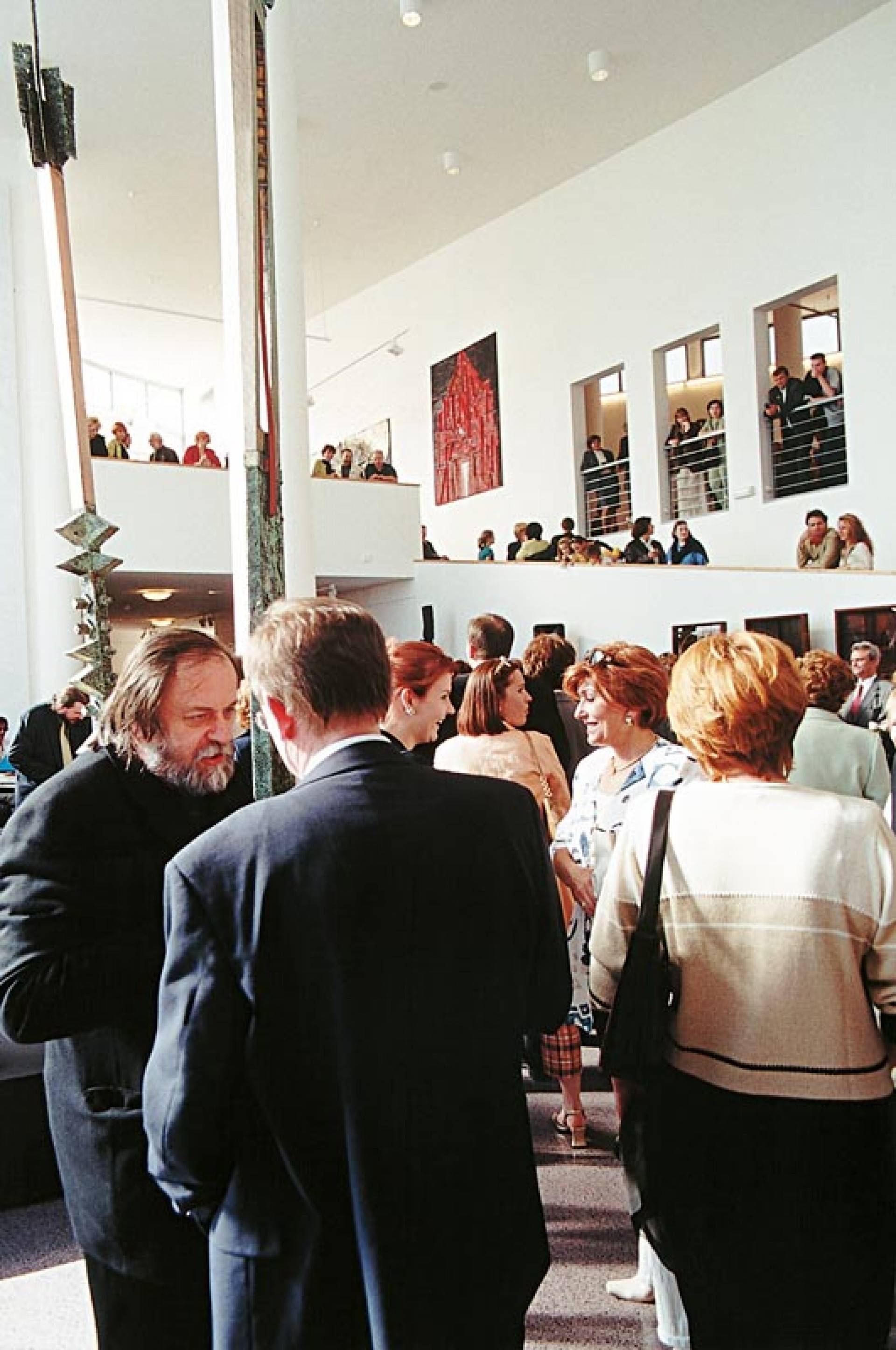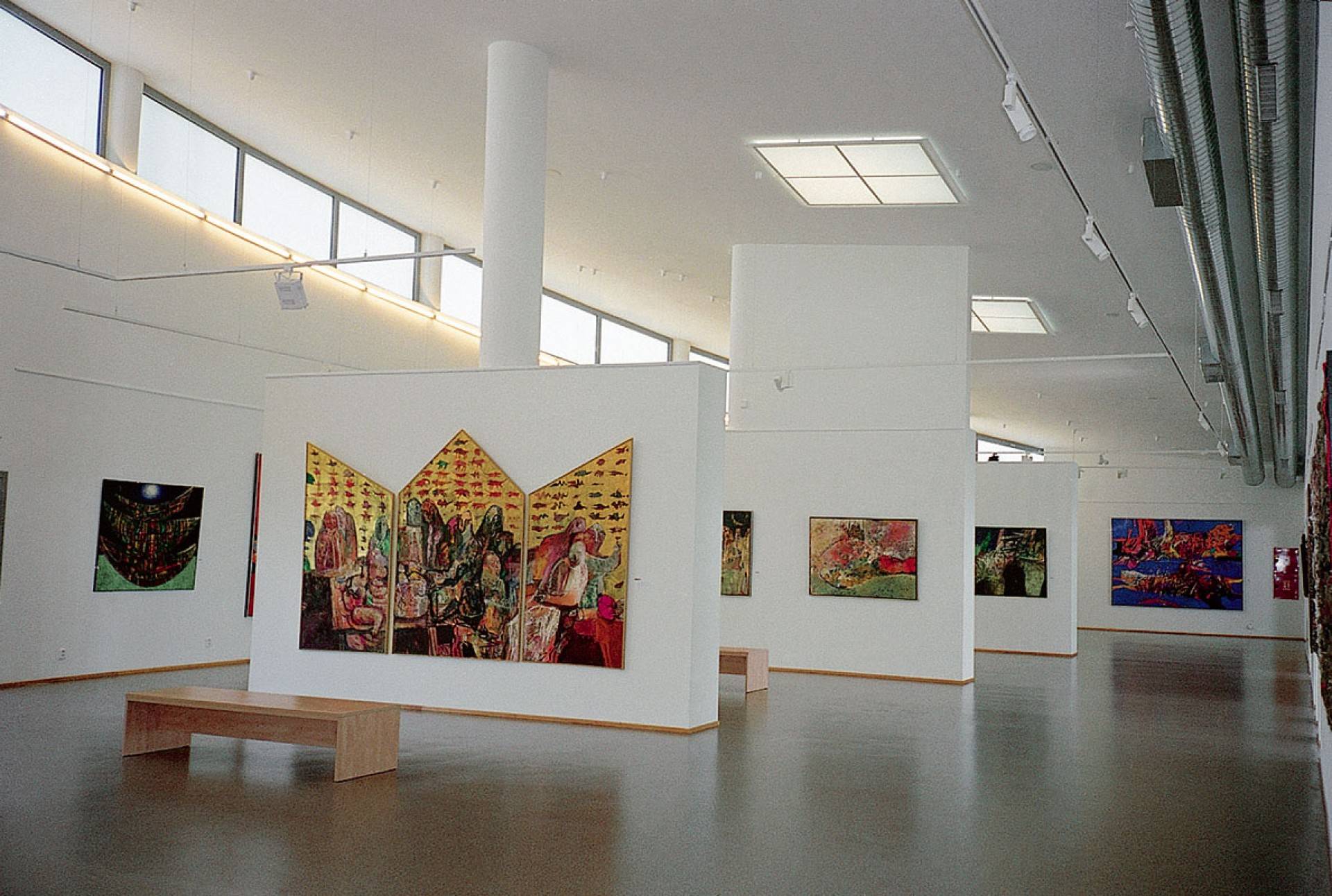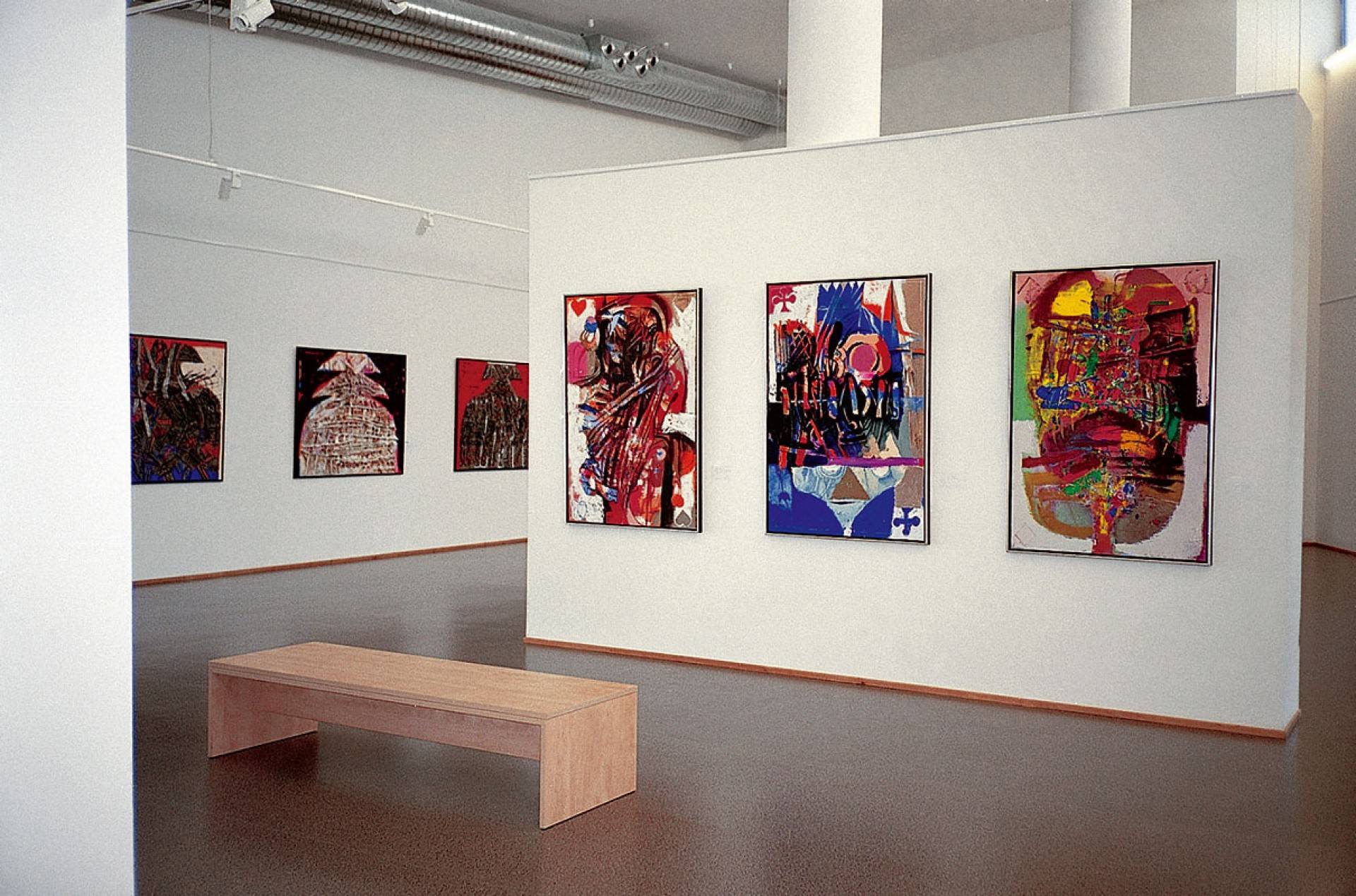

Peter Pollág belongs to the generation that en-tered the art scene in the mid-1980s. In spite of different points of departure and later development, this generation shared a major phenomenon: immediacy and a spontaneous vigour associated closely with the anticipation of the end of an era, and a sensitive approach to the events of the surrounding world.
An important moment in the development of Peter Pollág who was trained in Bratislava, was his study at art academies in Perugia, Paris, Madrid and Prague where he came into direct contact with new art streams and acquired an intimate knowledge of the heritage of old masters. This sensitive immediate relationship to the present and the historical, to the modern and the classical was reflected in the choice of means of expression and technique, and in the meaning and content of his work, and it became a determining factor for his entire oeuvre. Moreover, at the end of the millen-nium this relationship ranked him among the “cultural nomads” who exceed the borders of styles, historical periods and territories in order to creatively handle our heritage.
Born in the historic town of Levoča, which still resounds with the spirit of Master Paul, Peter Pollág was initially concerned with impressive landscape studies, which he soon abandoned for figural compositions and scenes abounding in figures and thriving with life. His work displays a strikingly dramatic expression and distinctively stylised form, a characteristic painting gesture and dynamic drawing emphasising the artist’s exceptional colourist qualities.
The artist’s pictures, prints, miniature book-plates and illustrations offer a unique view of man and the world. Although his world is once contemporary, distant, real or imaginary, he has the vision of a sensitive observer, thinker and philosopher. Looking at his works of art we realise the power of the message of European cultures, we perceive the resounding of mediaeval panel painting and the Byzantine sense of magnificence, however, we also recognise the monumentality and colour of French and Spanish masters. On the other hand, we are astonished by the artist’s courage to combine diverse painting techniques, collages, exacting structures, assemblages and relief painting, or even his unconventional venture into monumental sculpture created in the recent period.
Unrestrained wandering through centuries and styles enables Peter Pollág to experience and pass on ancient legends and historical messages, yet firm roots in the present enable him to convincingly interpret the contemporary mementoes. The artist not only speaks through narrative scenes and rich stories, but he often speaks through the mysterious language of parables, symbols and metaphors. The complexity of his forms and colours is astonishing and so is his unambiguous reduction of means of expression. His oeuvre seems to be a coded chronicle of mankind, an allegory of ideals of gene-rations as well as a warning against the power of evil, a mirror of eternal struggle of life and death, of lasting values and nothingness.
Controlling the past and the present, these determining powers and contrasts enliven the works of Peter Pollág in order to make us halt and contemplate, urging us to confront our own inner world with the surrounding universe.
Mária Horváthová
Born 19 February 1958 in Levoča.
Education
1974 - 1977 School of Applied Arts in Košice
1977 - 1983 Academy of Fine Arts in Bratislava
1980 Accademia de Belle Arti Pietro Vannucci in Perugia
1984 - 1989 Ph.D. study at the Academy of Fine Arts in Bratislava and Academy of Fine Arts in Prague
1986 - 1987 Ecole Nationale Superieure des Beaux-Arts in Paris
1988 Faculdad des Bellas Artes Universidad Complutensee in Madrid
Professional experience
1983 - 1990 Teacher at the Academy of Fine Arts in Bratislava
1990 - present
Free lance artist. Lives and works in Bratislava.
